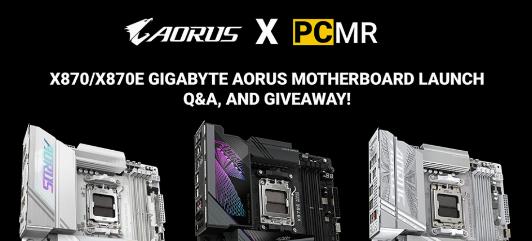HYTE AT CES 2024

Hyte has been doing some very interesting things on what concerns cases and cooling, but also now peripherals as well. They definitely are not afraid to try something different, and they very much love to go creative on the naming of their products, as you'll see.
We had heard about it at Computex, but now we can see it in all it's thicc glory. The main star of the Hyte showcase was indeed the THICC Q60 All-in-one liquid cooler.
Now, with a name like THICC Q60, you may be wondering what exactly is so thick about it? Well, most everything, really.
The radiator is 52mm thick, which is considerably thicker (thiccer?) than most AIOs on the market. Thickness is, indeed, performance, so that should help give it a considerable edge over most 240mm competitors and in fact, Hyte claims that this AIO can perform at a 360mm performance level.
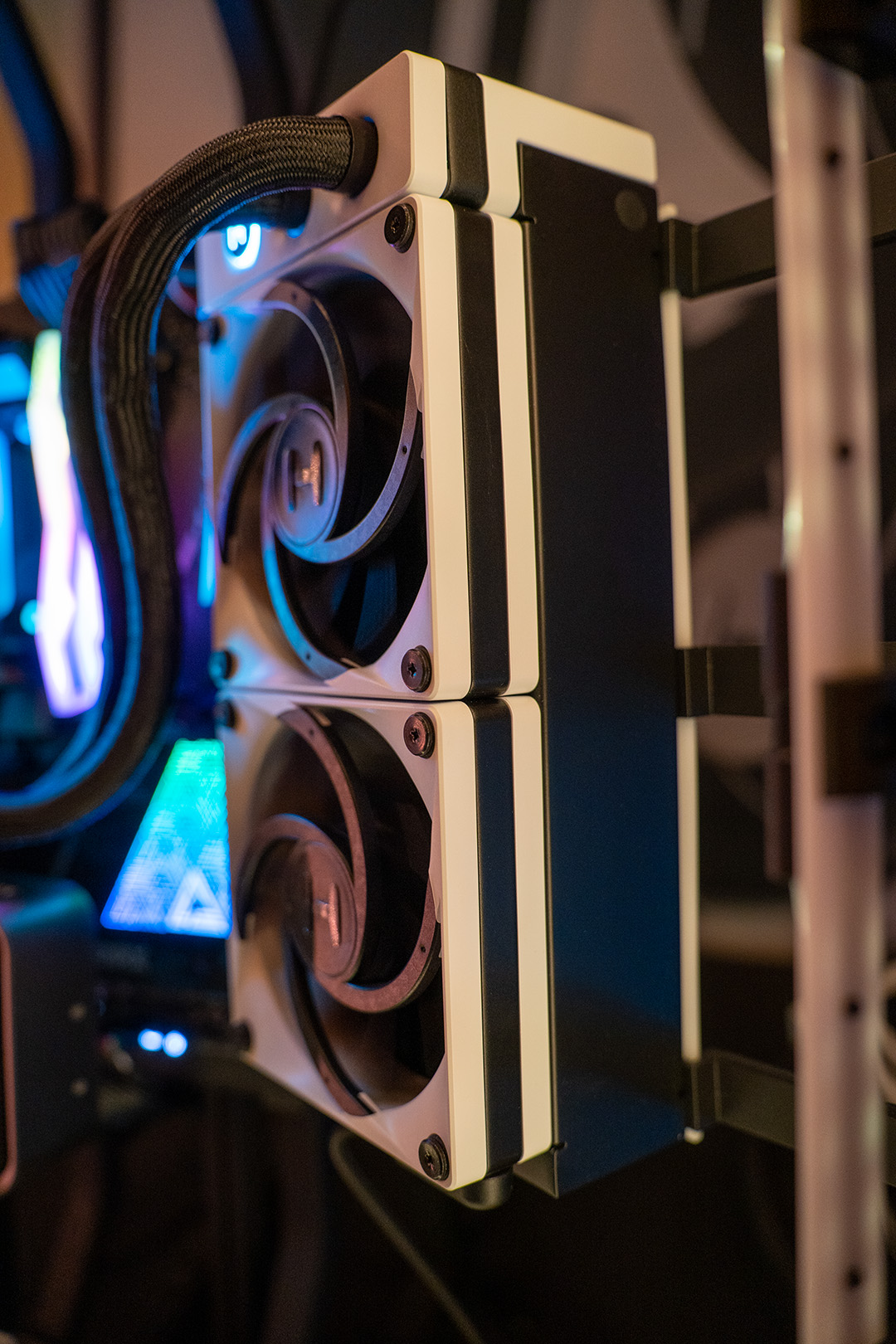
A very interesting feature of the THICC Q60 is the fact that it features 2 pumps in the radiator itself rated for up to 4500rpm. Not only do radiator-located pumps make a lot of sense (hurr durr, tubes down) but having two of them does contribute to performance as well as provide a failsafe just in case any of them fails (if your AIO only has one and it fails, RIP).
The fans themselves are thick as well. 32mm. And yes, they're also creatively named: THICC FP12. They're adjustable up to 3000rpm and can deliver up to 105.8 CFM airflow and 8.14mm of H20 static pressure, which is what matters the most for a radiator application. They're also magnetic daisy-chainable (and have what is probably the strongest magnetic force I've ever seen in a fan). They feature temperature sensors in the fan itself, which will integrate with the Nexus software ecosystem (more about it below).
So, overall this set will be about 84mm thick, and (at least as far as we know) will only come in 240mm. I kinda wanted to see a 360mm, because why not? As is I am sure that the performance will be quite something, you just need to have room for its girth.
Now, the only thin part of the THICC Q60 is the screen itself. I must confess that I found its shape odd at first, but it grew on me and now I am a fan. It's a 5-inch LCD with a resolution of 720x1280 pixels, 300 nits brightness, and 60hz refresh rate that hangs from a floating spout.
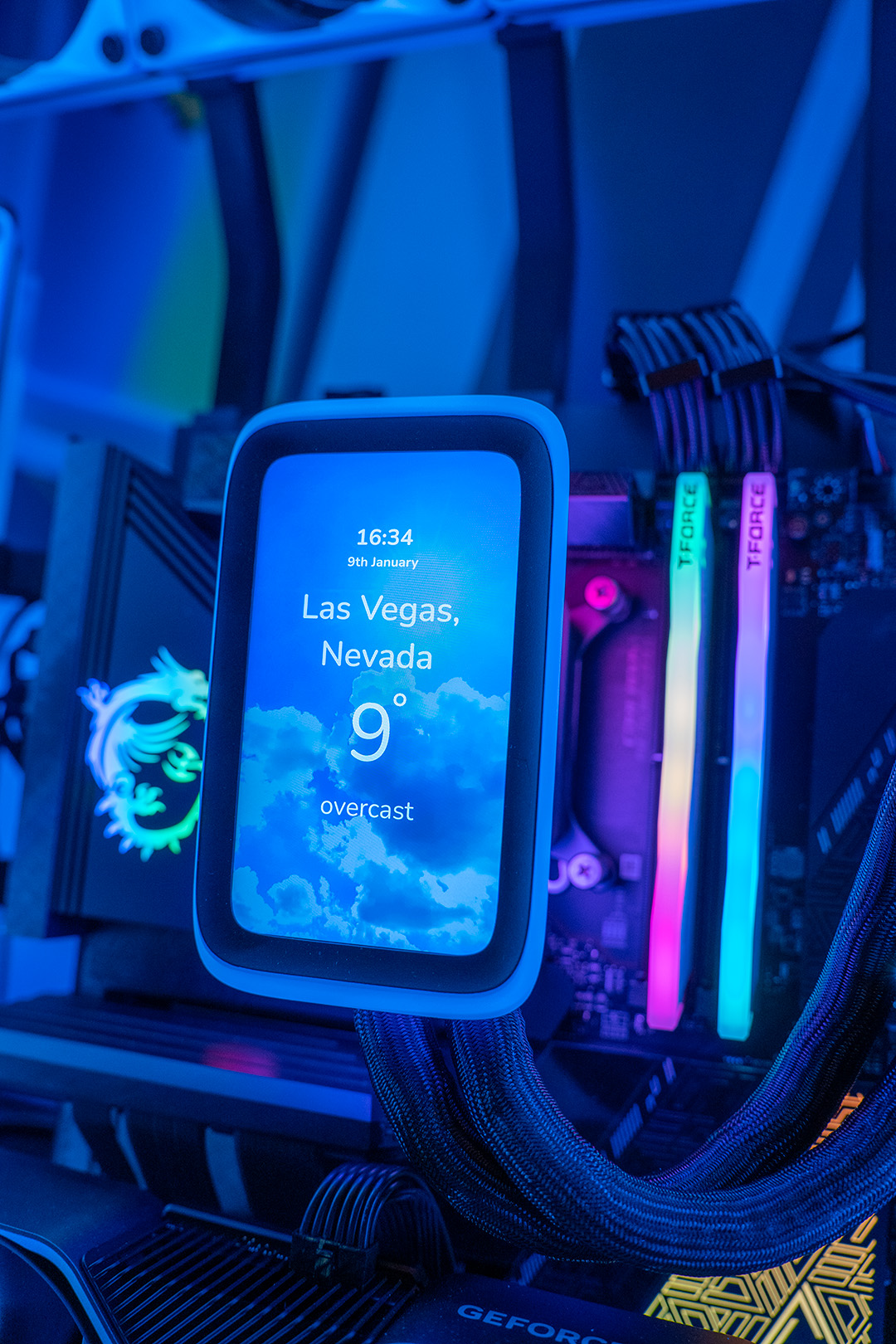
I guess you know exactly when this picture was taken.
Again, this is not a standard shape for a screen on an AIO. But I kinda like it. We have way too many AIOs that look exactly the same, so why not try something new? Kudos to hyte for trying to make something different.
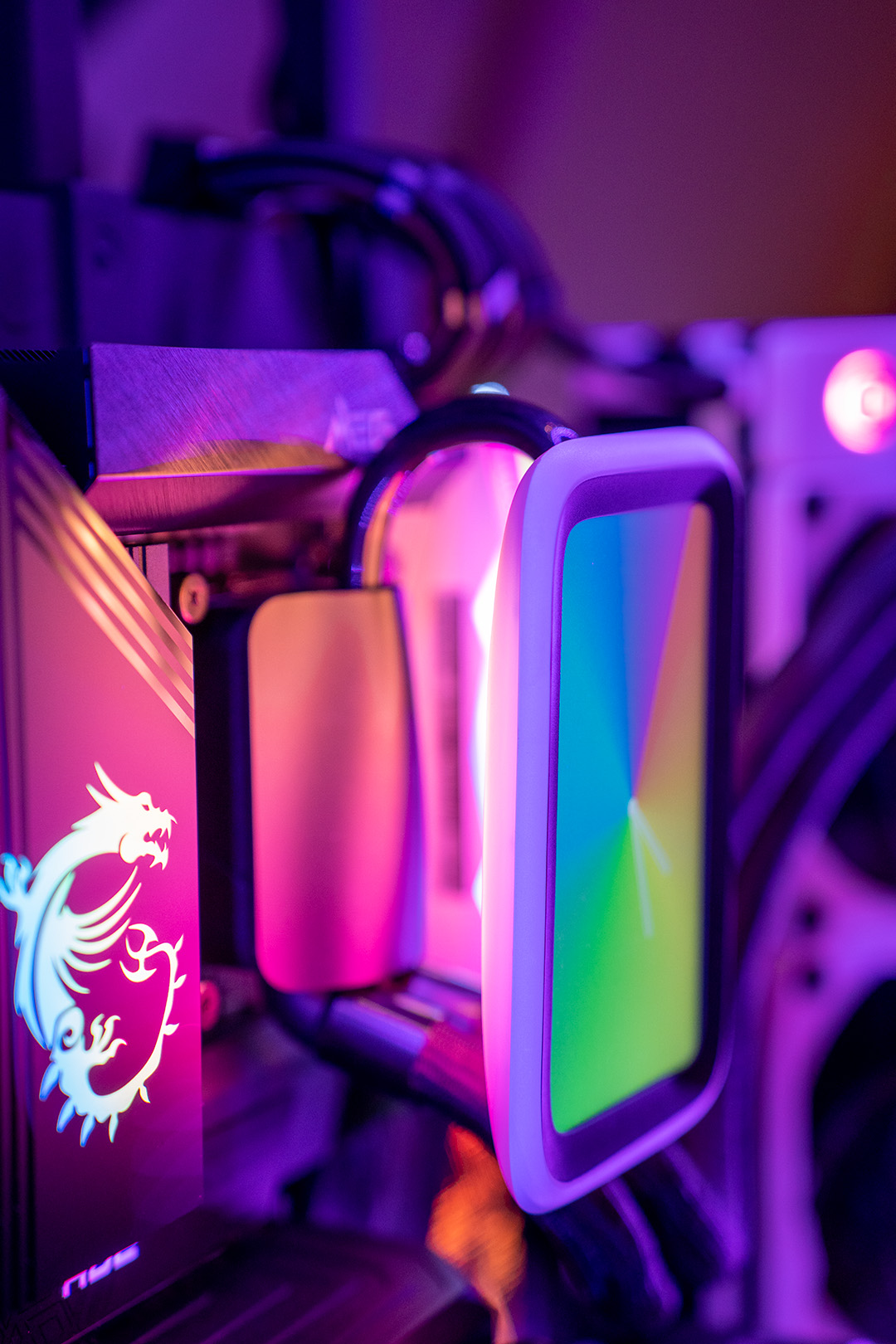
This is my spout.
And yes, you can twist it both to the left and right to accommodate whatever aesthetic desires you may have.
Now, next is the KEEB TKL. Remember when I talked about how Hyte creatively named its products? So, the KEEB TKL, which is their tenkeyless keyboard, features Fluffy Lavender switches and "Flappy Paddle" tactile media keys.
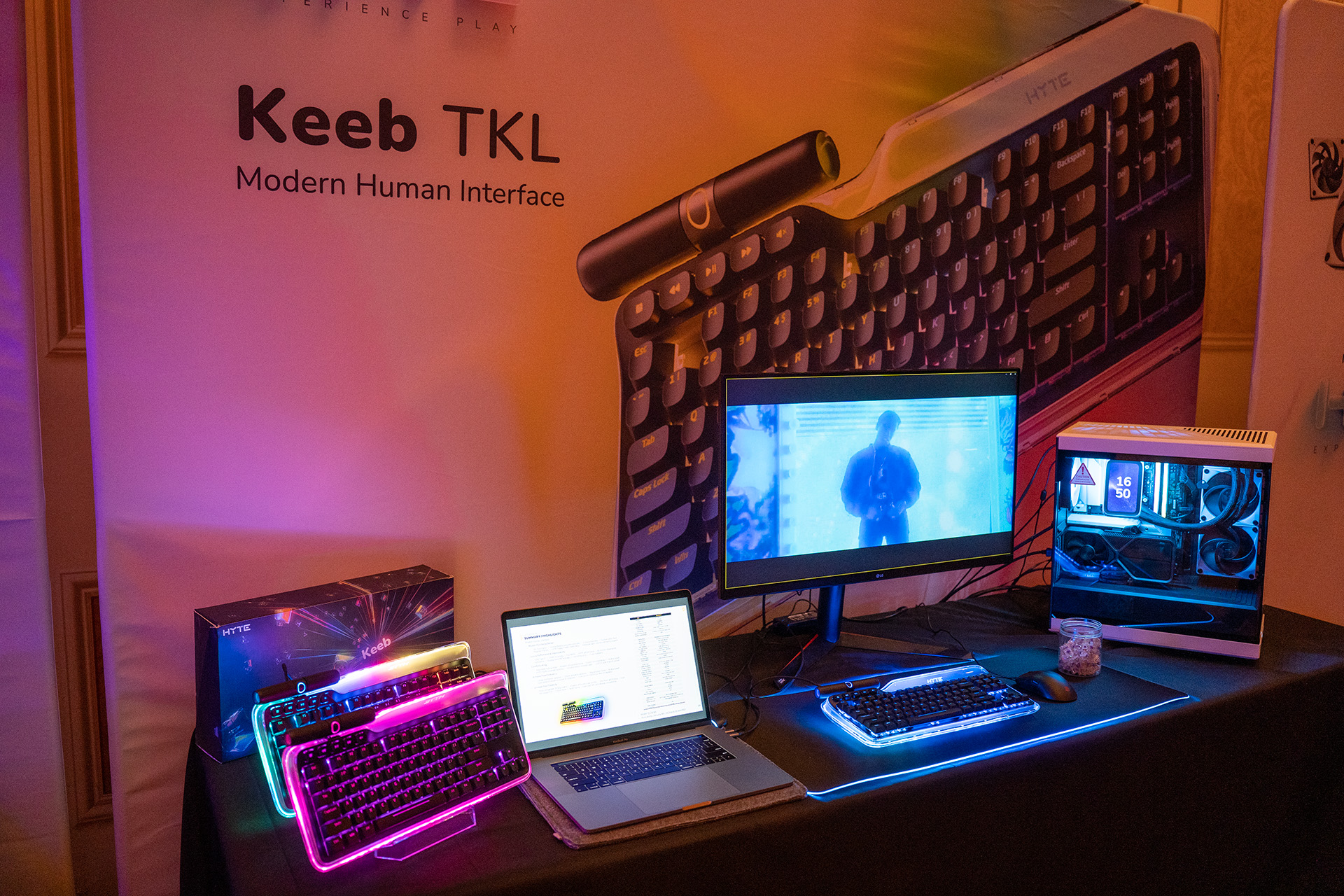
On the top left, above the flappy paddles, you can also see the dual magnetic Rollers, which are large and do feel great, and that you can customize, together with any of the other keys, with 4 layers of functions and up to 16 macros per profile.
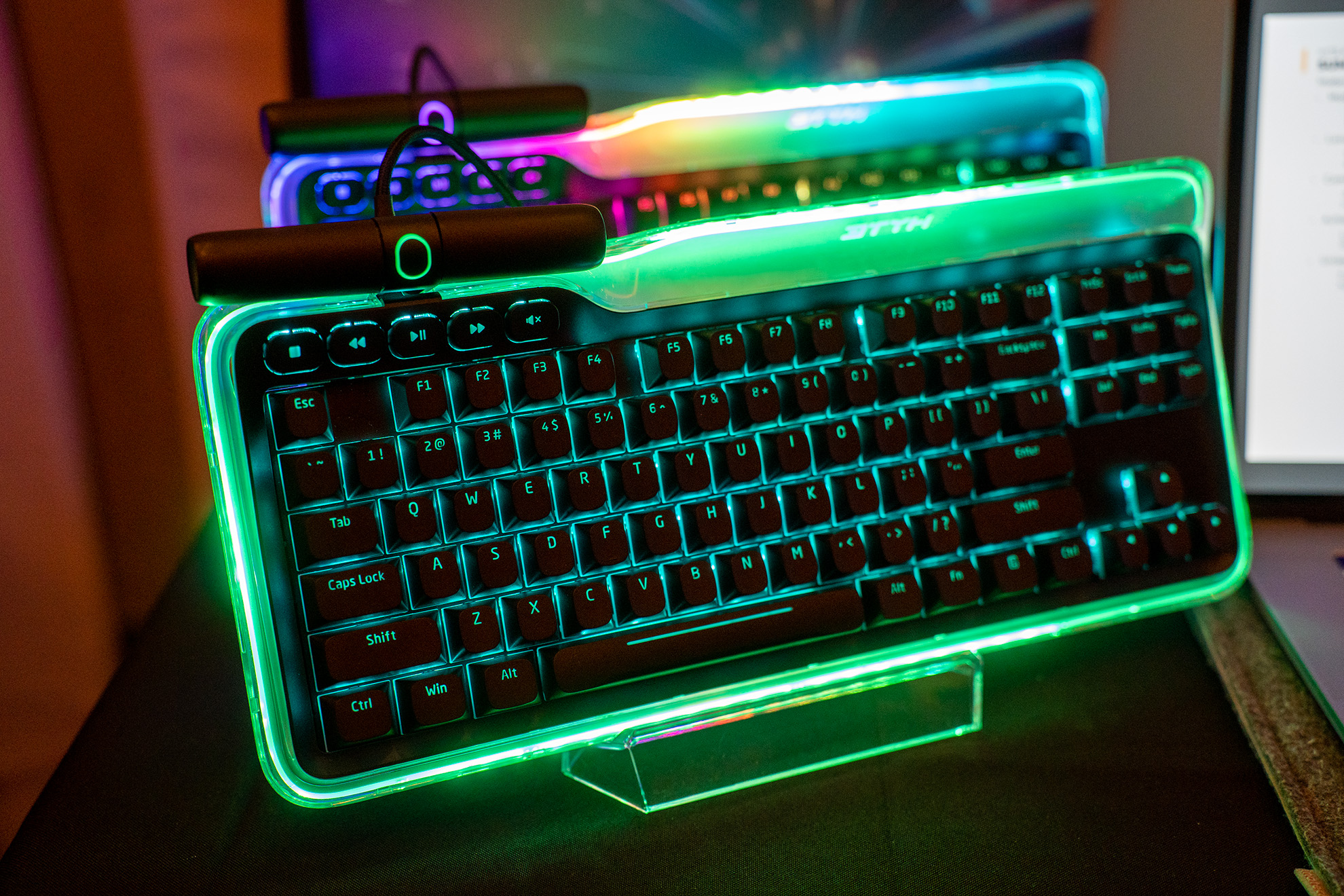
I can confirm that the Switches are fluffy and that the paddles are indeed flappy.
If you're a keyboard nerd (and I mean it in the best of ways), you'll be glad to learn that the board is fully swappable, with a 5-Pin Hot-Swap PCB that is 1.2mm thick and has north-facing sockets. The switches come pre-lubed with Krytox 205g0 to make sure that the fluffy keeps fluffing for a long while as well. They are 45g rated and have a 1.5mm actuation distance.
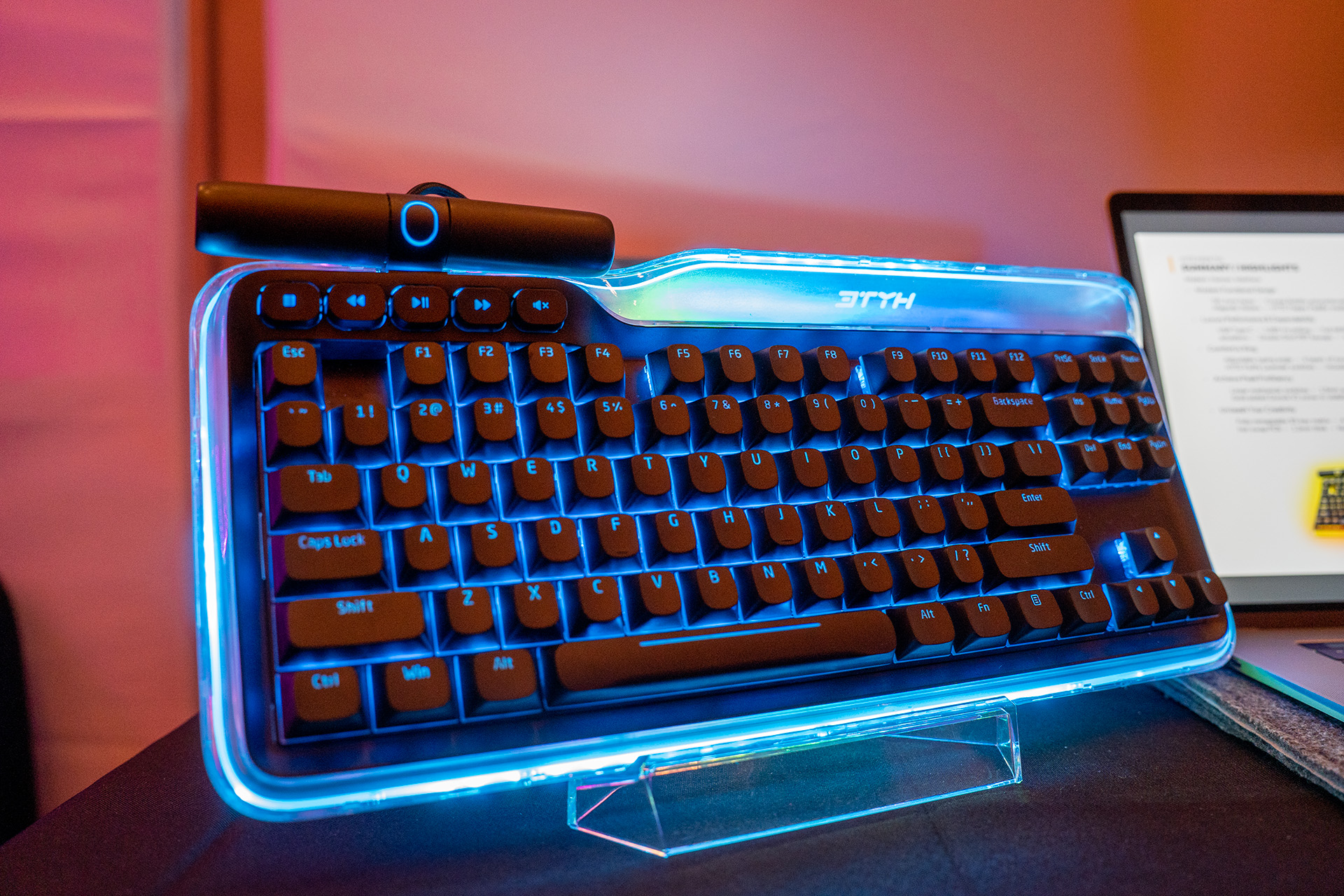
The RGB (155-pixel qRGB Array) looks great in this "Crystal Bubble" case that brings me back to the early 2000s, and to some of my personal favorite design choices for PC peripherals.
The Nexus software is kind of what drives all of this RGB around. It powers the Nexus Ecosystem and Hyte claims it to be the most customizable and expandable ecosystem of the sort in making sure that you can modularly connect and control pretty much everything you see in this article. The THICC Q60 itself can be the center point of a fully daisy chainable system of AIO, fans, LED strips, case LCD, and whatever else your heart desires in fully controlling everything from their RGB to fan speeds, to widgets on the LCD and everything in between, like audio to lighting visualization and screen mirroring. You can also just get a controller instead if you don't own a Q60.
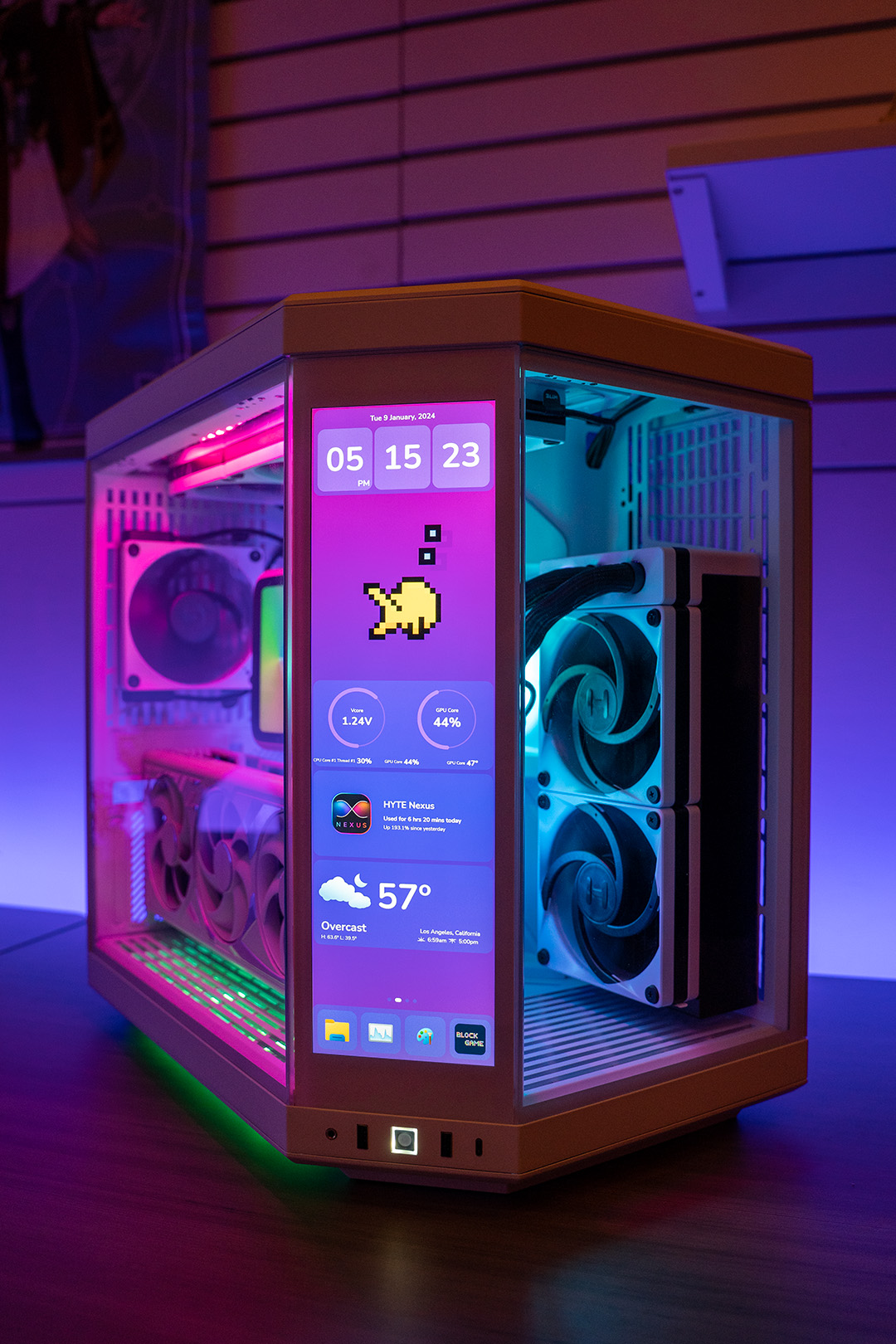
The Y70 Touch case with the THICC Q60 installed, running the Nexus software.
The connections Hyte is using are magnetic, so you can snap them on and off instantly and you can connect up to 18 devices per port, which should be more than enough to handle most user's entire PC of just that one port. Something I can definitely appreciate is that even though they are promoting their ecosystem, the fans do support legacy 4-pin PWM as well, which ensures they can be used universally.
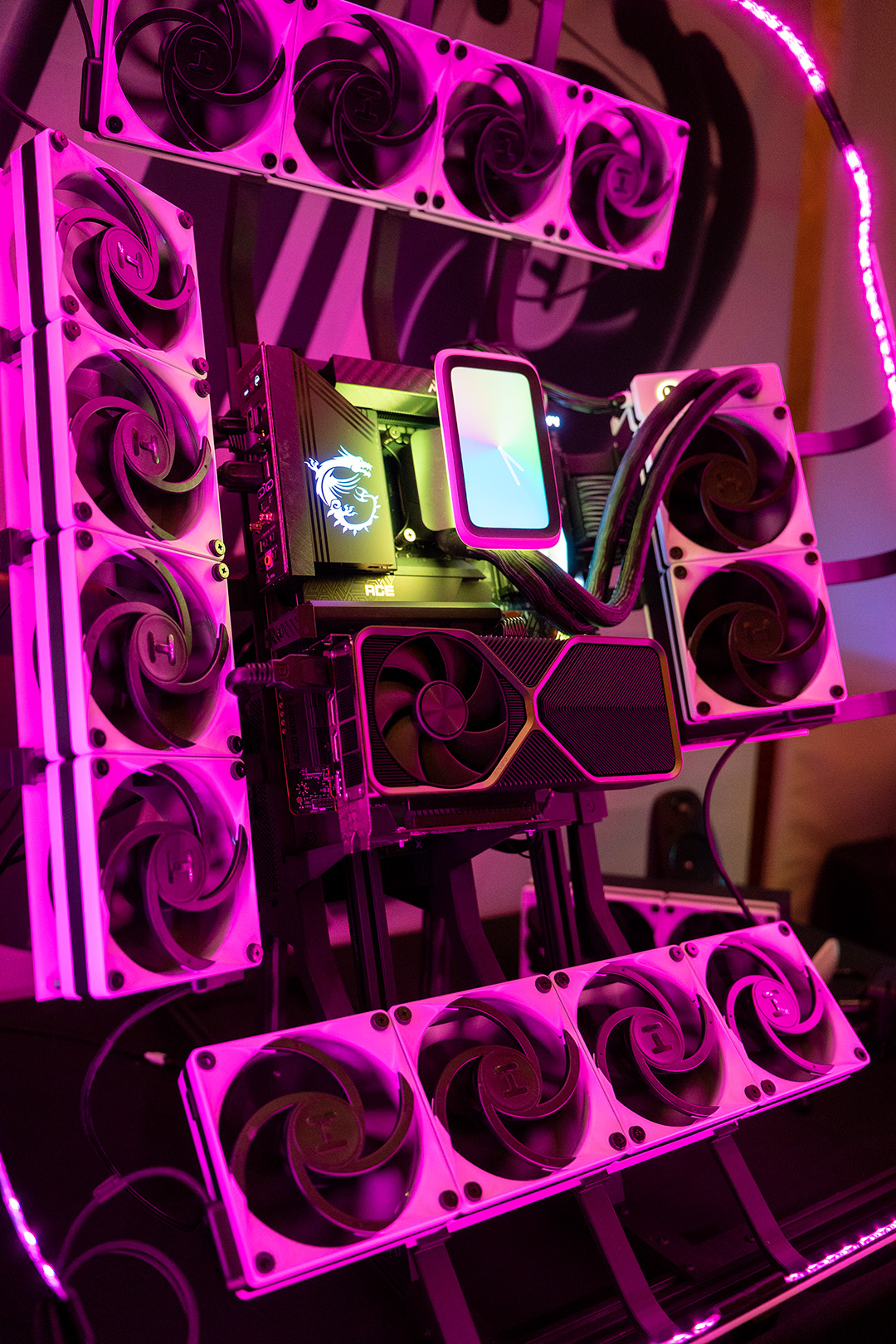
Behold!



